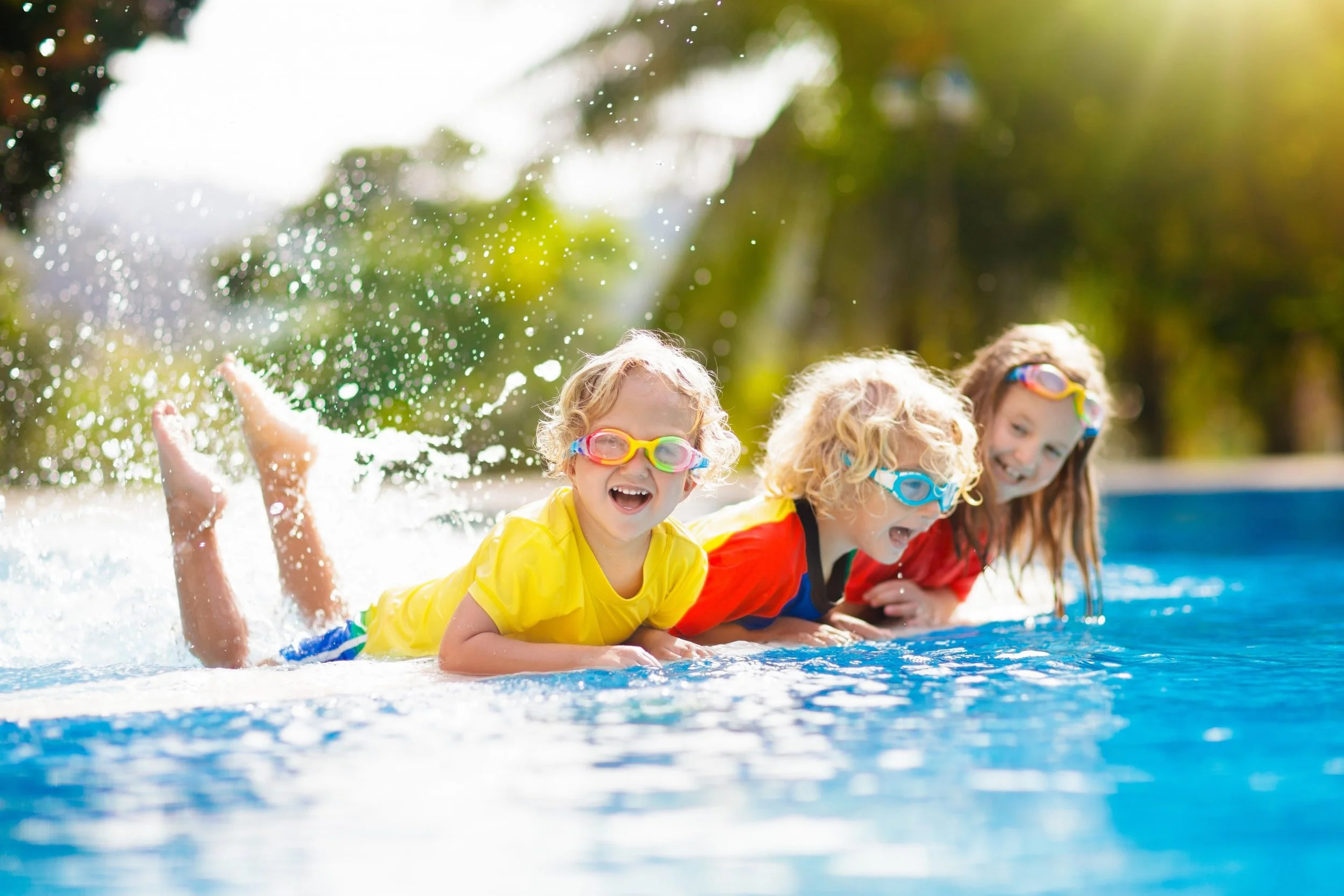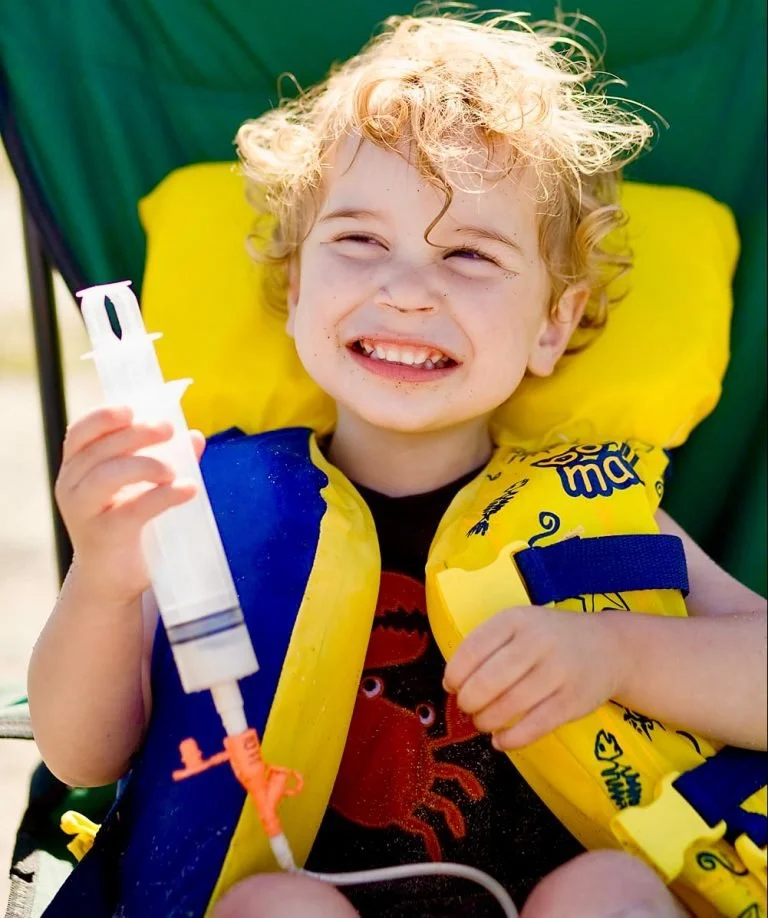Swimming with a Feeding Tube
Some of the most popular summertime activities include days at the pool, lake, beach, pond, or river. If you or your child uses a feeding tube, you may be hesitant on whether you or your Tubie should dive right in or sit this one out. You may catch yourself asking…
‘IS SWIMMING WITH A FEEDING TUBE ALLOWED?’
The short answer: Yes, in most cases, swimming is allowed! Many people with feeding tubes (G Tubes, GJ Tubes, J Tubes, or NG Tubes) enjoy water activities with only a few precautions. However, there are important guidelines to help keep your Tubie safe and healthy while swimming.
CHOOSING SAFE SWIMMING LOCATIONS
While swimming is generally safe for most Tubies, the type of water matters:
Chlorinated Pools & Saltwater Pools/Oceans
These are usually considered safest because the water is treated and maintained to reduce bacteria levels. Most healthcare providers recommend sticking to these environments when swimming with a feeding tube.Lakes, Ponds, Rivers, and Natural Bodies of Water
These can contain higher levels of bacteria, or other contaminants that may lead to infection, especially around the stoma site. If you're considering swimming in these areas, it’s best to check posted water quality reports or consult the CDC’s Healthy Swimming website for updated safety information.Hot Tubs & Public Spas
Avoid public hot tubs, as the warm water provides an ideal environment for bacteria growth and increases infection risk.
Photo Credit: @littleearthling
Now that you are aware your Tubie can participate in almost all summertime swimming activities, with little to no restrictions, check out the information below for more detailed recommendations on swimming with a feeding tubebased on which type of feeding tube your Tubie uses.
SWIMMING WITH A NG TUBE:
The main thing to note is before swimming with a NG Tube is to make sure the tube is closed, clamped, and disconnected from the feeding pump. This will ensure the tube will not get caught on any objects when swimming.
SWIMMING WITH A G TUBE/ GJ TUBE/ J TUBE:
**Please note that Tubies with a brand-new stoma site (less than two months from placement) should NOT swim. After you have checked with your doctor for a healed and healthy stoma site, your Tubie should be able to enjoy swimming normally.
GENERAL RECOMMENDATIONS:
Properly clean stoma site and feeding tube after swimming to prevent infection.
Change dressings after swimming if applicable, and make sure the site is completely clean and dried before the next feed.
Disconnect the feeding pump and extension set while swimming.
If your Tubie is encountering a sandy area, you may want to cover the entire tube site and feeding tube with a clear, protective dressing, such as AquaGuard or Tegaderm.
If your child must stay connected while swimming, consult with your doctor for the safest instructions on swimming with your feeding tube and ensure you know your Tubie’s limitations.
The Moog infinity pump is manufactured to be semi-waterproof and will be okay if it sees some splashes. Do not submerge your feeding pump or try to seal it in an airtight container as it may encounter large quantities of water.
TALK TO YOUR DOCTOR FIRST
Before heading out to swim, it’s always best to:
Review your child’s individual medical situation with their healthcare provider.
Discuss any unique risks based on your medical history, stoma condition, or immune status.
Get specific instructions if you must remain connected to feeds while near water.
Download our “Swimming with a Feeding Tube” guide to reference during your next swimming adventure.
**This information is for general educational purposes and should not replace the medical advice of your healthcare provider.**



